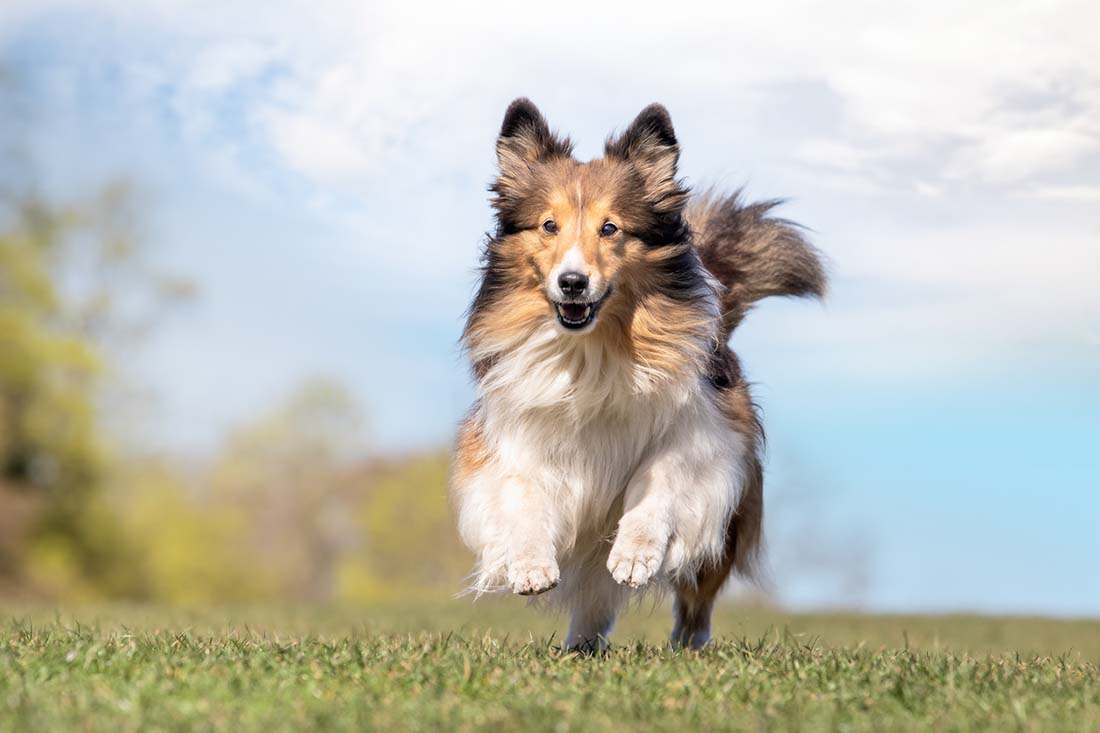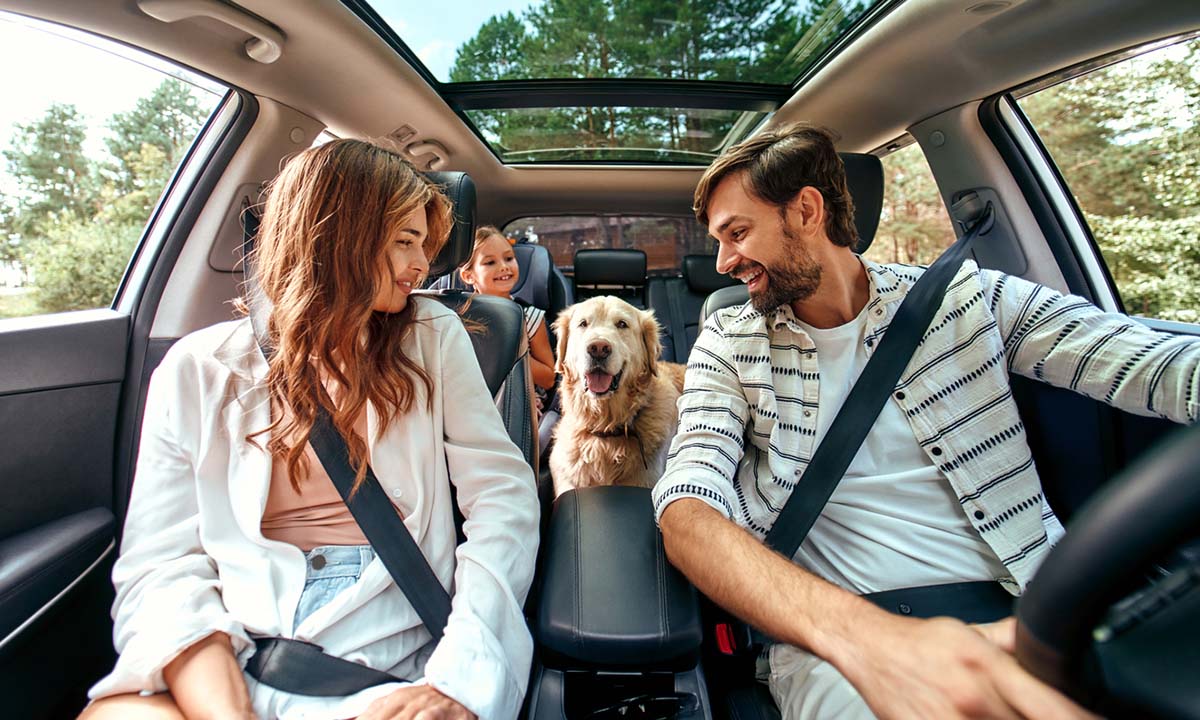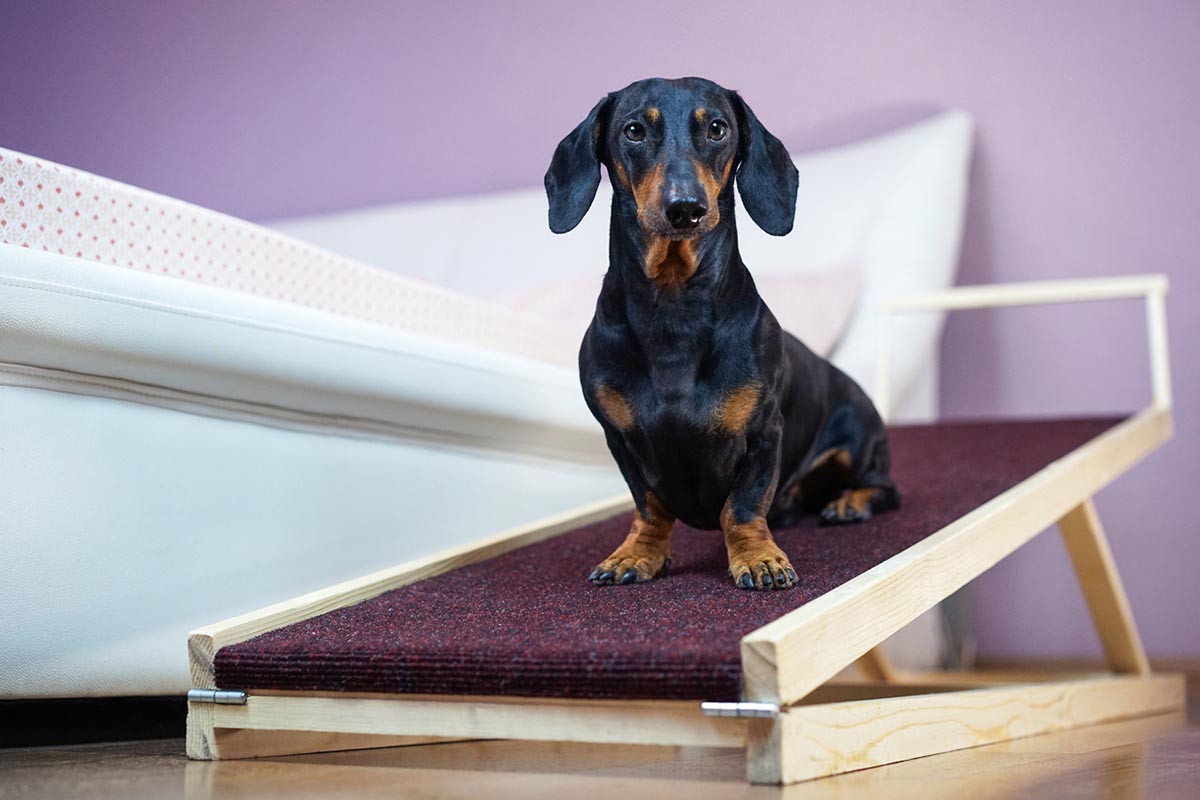8 Majestic Long Hair Dog Breeds
These long hair dog breeds require a bit more care and upkeep than many of their short-haired brethren.
Long, luxurious hair doesn’t just look good on humans – dogs who sport gorgeous, flowing coats are completely fabulous, too! Luckily for pet parents with a penchant for long-haired furry friends, there are several long hair dog breeds, from dainty and darling Yorkshire Terriers to big and shaggy Old English Sheepdogs. And even among long-haired dogs, you’ll find a variety of coats that vary in texture, length, and care requirements.
If you’re curious about dogs with long locks or you’re already enjoying life with a well-tressed pet, here’s everything you need to know about long-haired dog breeds.
Long-Haired Dog Breeds 101
So what makes a dog a long-haired dog? That might seem like a simple question, but according to Dr. Jessica Wilson, DVM, there’s more to the answer than just the length of a dog’s coat.
“Obviously, long hair is longer than short hair, but there are other factors to consider,” says Dr. Wilson. “Perhaps the best way to differentiate between a short-haired dog and a long-haired dog is whether the fur obscures the shape of the dog’s body. With most short-haired dogs, it’s pretty clear what that dog’s body looks like. But long hair adds a fluffiness that can make it hard to tell what your dog’s shape actually is.”
Here’s another way to look at it: When you bathe a short-hair dog, you’re not going to be surprised by how they look when they’re wet. On the other hand, when a long-hair dog gets wet, you might be shocked to see how different its shape is underneath that distinctive coat.
Fur texture
Then there’s fur texture. “Some long-haired dogs have a dense undercoat that adds bulk to their fur; others have a more hair-like coat. Then there are curly-hair dogs like Poodles, which are also considered long-hair dogs,” Dr. Wilson explains.
The texture of a dog’s fur is often related to its breed history – after all, many of today’s modern dog breeds were originally bred to perform a certain type of work. “Let’s take Siberian Huskies for example,” says Dr. Wilson. “These dogs originated in a very cold place and were working dogs, so they were bred to have a very dense double coat that helps them keep warm in extreme cold.”
Many Siberian Huskies, for example, possess the medium-length coarse coats of their ancestors, though that coat has evolved to be softer and fluffier over time. There’s even a rare, non-standard, long-haired variant called a “wooly” Siberian Husky.
Not all long-haired dogs had to “work” for their hair, though. Here’s an example from the other end of the spectrum: Shih Tzus. These dogs were originally bred as companion dogs for Chinese emperors more than 1,000 years ago. Their fur is particularly silky and was likely bred for looks, rather than utility.
Shedding and long-haired dogs
These days, some long-haired dogs are prized for other reasons. Dr. Wilson notes that some long-haired dogs – the ones with silky, hair-like coats – shed less than their short-haired counterparts. That can be a boon for those who suffer from allergies.
“Most dogs are going to be shedders,” she says. And that’s what tends to trigger allergies because most people are allergic to dog dander and saliva, which is released into the air when dogs shed. Regular brushing and regular grooming can help reduce shedding.
“But certain breeds, the ones with minimal undercoats, shed a bit less,” says Dr. Willson. The AKC categorizes several long-haired breeds as hypoallergenic family pets, including the Afghan Hound, Irish Water Spaniel, Maltese, Poodle, and Yorkshire Terrier.
8 Popular Long-Haired Dog Breeds
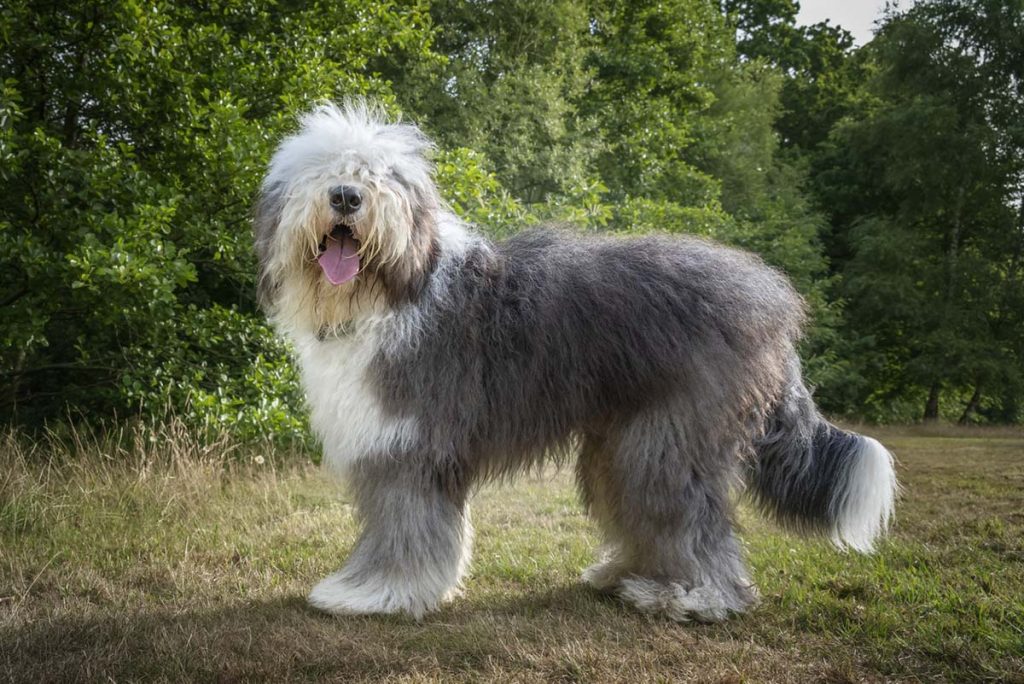
History aside, long-haired dogs enjoy plenty of popularity in the here and now. Here’s a roundup of some of the best dogs prized for their fabulous long-haired coats.
1. Collies
Rough collies and bearded collies are herding dogs with long majestic coats. You might recognize this dog as the same breed as the famous Lassie. Collies are smart, and loyal, and make great family dogs, but require a lot of daily exercise. Weekly brushing is recommended to prevent tangles.
2. Komondor
Komondors, like Bergamascos and Pulis, are known for their distinctive corded coats. They are very affectionate with family members and others they know well. They are great guard dogs due to their protective nature.
3. Old English Sheepdog
When it comes to long-haired herding dog breeds, you don’t get more iconic than the Old English Sheepdog. This shaggy breed is known to be smart, gentle, and agreeable and was initially bred to herd cattle. Old English Sheepdogs are large dogs and usually weigh around 60-100 pounds. daily brushing is recommended to prevent matting.
4. Pomeranian
Pomeranians may be small dogs (they usually only weigh between three and seven pounds), but what they lack in stature, they more than makeup for with their luxurious long coat. (Plus a soft, dense undercoat, which makes them even more cuddly!) These fluffy dogs are active and smart, so you’ll want to be sure that you have plenty of time for play and walks.
5.Poodles
Poodles stand out from other long-haired dogs due to their extremely curly, voluminous fur, which can be shaped by groomers into imaginative and adorable cuts, like the lion cut, teddy bear cut, and cupcake cut. Standard Poodles are whip-smart and typically weigh between 40 and 70 pounds, but there are miniature and toy versions of the breed that are much smaller.
6. Shetland Sheepdog
Weighing between 15 and 25 pounds, Shetland Sheepdogs are herding dogs that originated in Scotland to herd sheep, poultry, and even ponies. They’re known for their intelligence and agility and make excellent watchdogs. Despite being quite small, Shetland Sheepdogs have heavy, thick coats originally designed to protect them in harsh climates.
7. Shih Tzu
As far as long-haired little dogs go, few are as distinctive and in demand as the Shih Tzu. Originally believed to have been bred for ancient emperors of China, these royal canine companions are playful and outgoing, but very laidback, which makes them ideal lapdogs. Their fur is also particularly long and luxurious, but potential pet parents should note that those glamorous coats do require a lot of upkeep. They look a lot like another small long-haired breed with a silky coat, the Lhasa apso.
8. Yorkshire Terrier
Another notable long-haired toy dog breed, Yorkshire Terriers (Yorkies) are beloved for their long, silky coats and strong personalities. Despite their small size (most Yorkies don’t weigh more than seven pounds), this breed makes a good watchdog. While Yorkies are known and loved as loyal lapdogs now, their ancestors were bred as fierce ratters.
Other dog breeds with long hair
Other dog breeds with long coats include:
- Havanese
- Briard
- Great Pyrenees
- Irish setter
- Pekingese
- Tibetan mastiff
- Afghan hound
How to Take Care of Long-Haired Dog Breeds
As one might expect, long-haired dogs can require a bit more in the care and upkeep departments than many of their short-haired brethren. Here are some of the most important things for pet parents to know.
Grooming needs
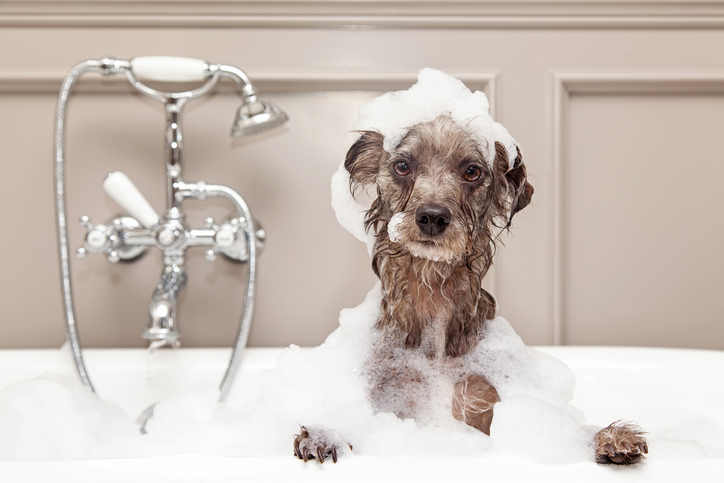
Just by virtue of the fact that their fur is longer, long-haired dogs require more grooming than short-haired dogs. “Whether you do it yourself or send your dog to a groomer, long-haired dogs require routine maintenance to keep them clean and healthy,” says Dr. Wilson. “You have to brush them regularly – some even daily – to keep their coats free of knots and mats, which are very uncomfortable and can lead to skin irritation and sores.”
Dr. Wilson also adds that many dogs with longer hair (and their parents) can benefit from certain tried-and-true grooming techniques used on longer coats. “Many groomers do what’s called a ‘hygiene cut’, cutting the fur around your dog’s genitals short so that urine and feces don’t get stuck and cause infections or other issues.”
Don’t only focus on the outer coat. Grooming is particularly important for dogs with thick undercoats like Newfoundlands or Bernese mountain dogs. Plant matter, dirt, and other debris get stuck under the top layer of fur and cause unseen issues in the undercoat. “Groomers often strip the undercoat when long-hair dogs come in for this reason,” Dr. Wilson adds.
While humans with long hair might enjoy a trip to the salon, not all long-haired dogs look forward to grooming appointments. Dr. Wilson recommends starting a grooming routine when your long-haired pup is young, so they become accustomed to brushes, combs, and clippers. “I also recommend using a high-reward treat – something made from meat and without fillers, like JustFoodForDogs’ Beef Liver or Salmon Bark treats – to entice your dog to sit through a grooming session. You always want to reward dogs during grooming so that they have a better experience.”
Skin care
Dr. Wilson says that pet parents with long-haired dogs need to pay special attention to their pets’ skin. “It’s under a lot of fur, so issues that might be easy to spot on a short-haired dog could be missed,” she explains. “You should always take a look at your dog’s skin when you’re bathing him and search for red spots or other areas that might be causing discomfort. You also want to be especially vigilant for parasites and regularly check for ticks, fleas, and flea dirt.”
Dr. Wilson adds that dogs with long fur – particularly those with thick undercoats – must be dried thoroughly after regular baths, as wet spots can stay wet for a very long time and cause skin irritation.
Nutrition
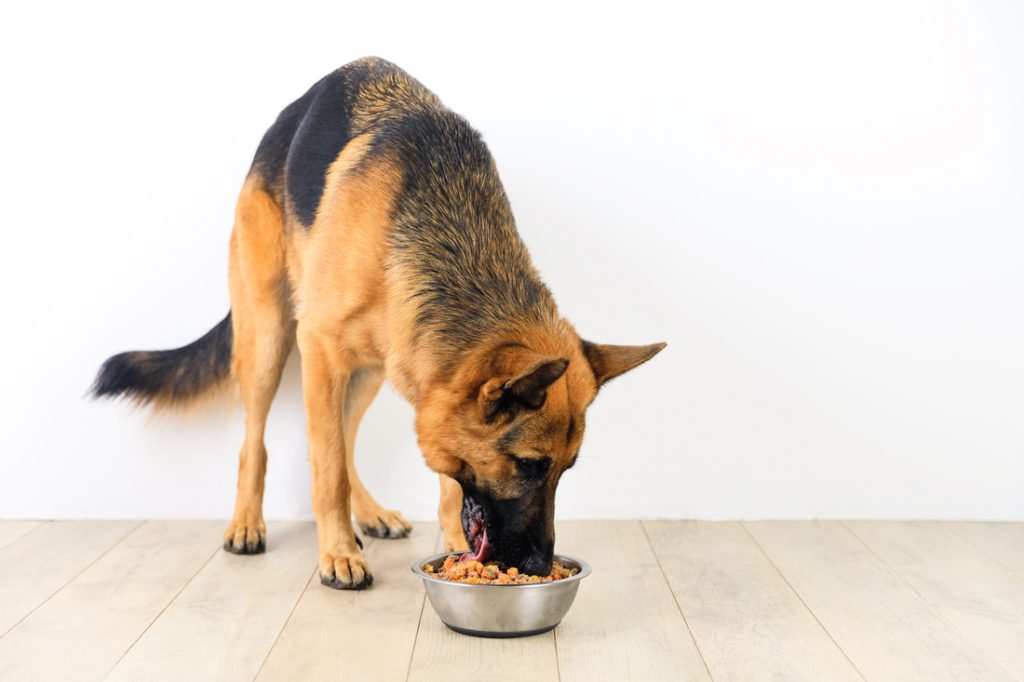
Maintaining your long-haired dog’s coat doesn’t just entail grooming – nutrition also plays a critical role. “It’s important to serve any dog properly balanced meals that are on the highest plane of nutrition,” Dr. Wilson explains. “But especially with long-haired dogs, you want food that’s made from high-quality, USDA-certified ingredients.”
Recipes like JustFoodForDogs Fish & Sweet Potato made with wild-caught Pacific cod or high-protein, allergy-friendly Venison & Squash are just two examples. Dogs love for the taste and pet parents love the health benefits.
According to Dr. Wilson, that’s because premium ingredients make it easier for dogs to readily absorb nutrients and amino acids that can affect their overall health. “We’ve actually done digestibility studies that show that dogs absorb more nutrients from whole foods than processed kibble,” she says.
Further, supplements, like Omega Plus, which contains Omega 3 fatty acids, can have a marked impact on skin health and reduce dryness and flakiness. “They’re also incredibly beneficial for the skin and coat because they have a lot of anti-inflammatory properties,” Dr. Wilson says.
She adds, “Along with conducting yearlong feeding trials and numerous other research studies on whole foods, JustFoodForDogs has an incredible number of reviews from pet parents providing feedback on how much whole foods have helped improve their dog’s skin and coat.”
Keeping Long-haired Dogs Happy and Healthy
Long-haired dogs can be wonderful companions, regardless of whether a prospective pet parent is looking for a cuddle buddy or an active working canine companion. However, before adopting a long-haired doggo, pet parents should carefully consider the grooming and nutritional needs of the breed.
“Be prepared to spend more time handling and grooming a long-haired dog than a short-haired one,” Dr. Wilson says. “They’re just more labor intensive.”
She adds that if a pet parent has any questions, they should reach out to their veterinarian to talk about different long-haired dog breeds and what breed might be the best fit for their particular situation. “You want to make sure you have the knowledge and the means to keep any dog you bring into your home as happy and healthy as possible.”
Kate Hughes is a writer, editor, and lifelong cat owner. She is the pet parent of two kitties, Mantis and Firefly.
